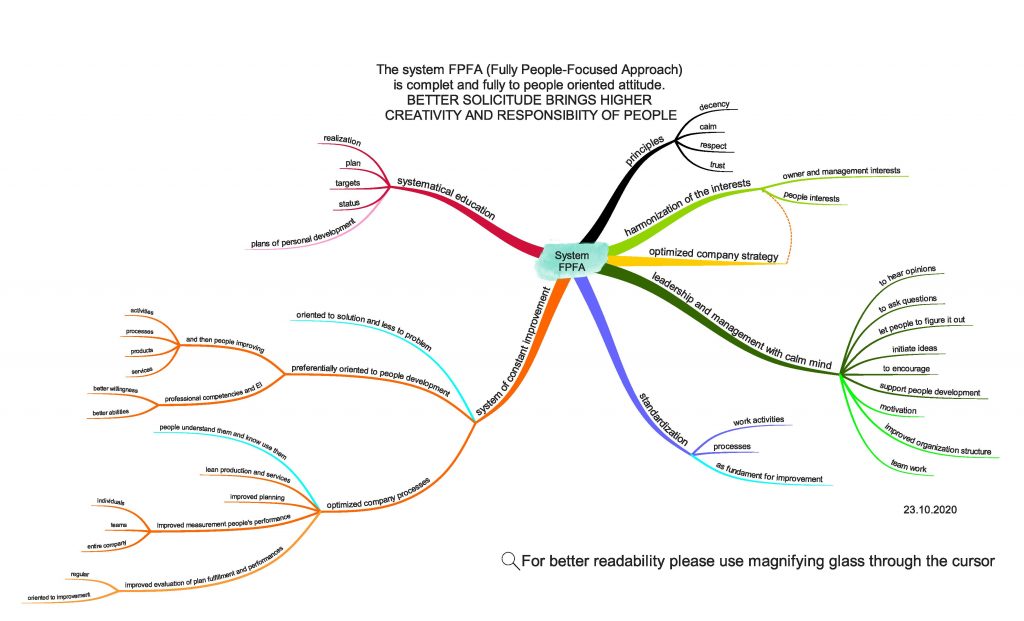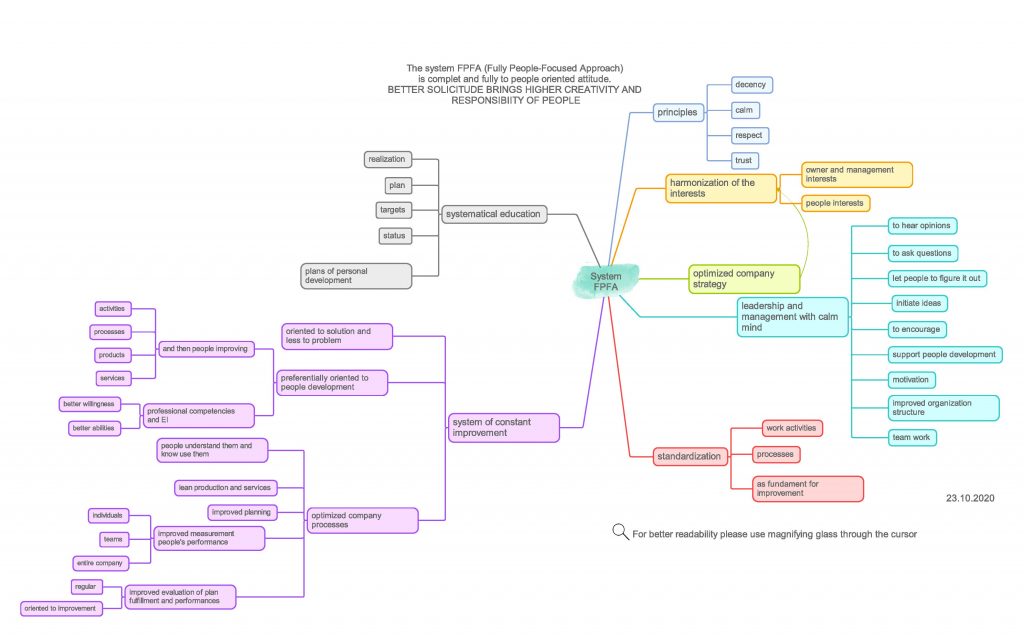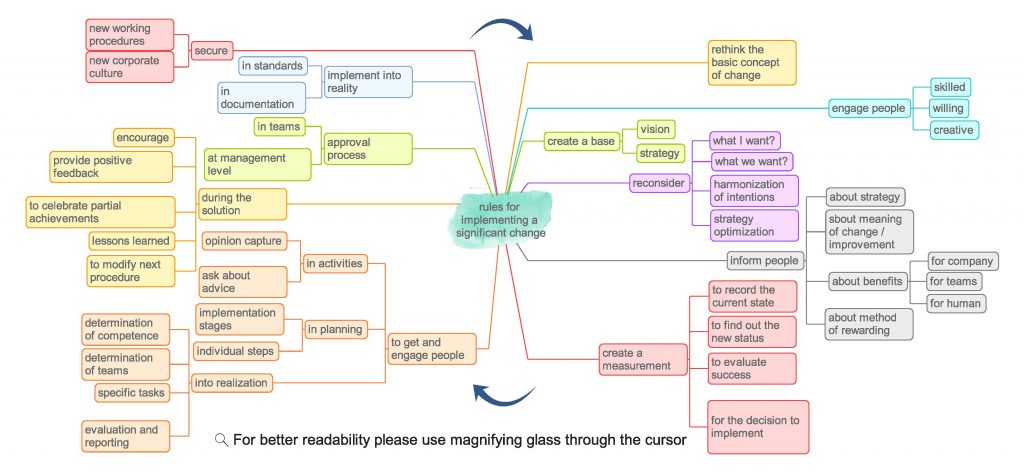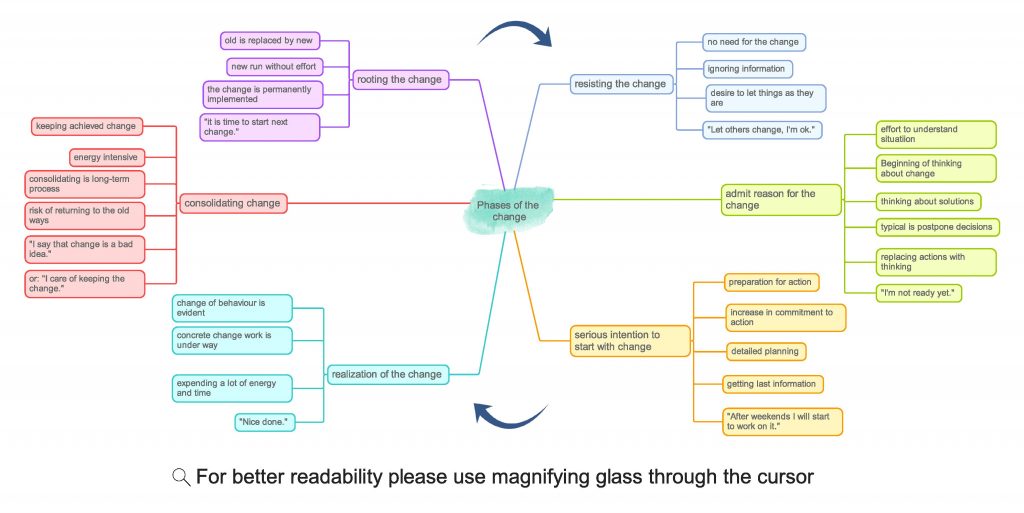We respect methods used by our clients. It does not matter if it is for researching people´s interests, planning, efficiency measuring, progressing, standardization or methods for creating strategy of the company.
Methods we present are tested in practice. They are listed here because of the possibility that you would like and choose them.

We divided the methods into two sections, “Good times” and “Bad times” because they are different in their velocity, step sequence and realization of the situation the company is currently in. There is possibility of using different kinds of methods when solving the problem of how to make the company better. In general there are no “good” or “bad” options. Every company is different, different people work there, they have other products or services and operate in different fields. That is why we need to figure out what methods can and cannot be used for different types of companies. It is a good thing to respect methods used in the company and slowly add and try new one.
Structured dialogue or certain type of brainstorming is often used for figuring out what people´s interests and opinions are.
We are proved by the mind maps. They support associative and intuitive thinking by attaching left and right hemisphere into the process. By that, we can increase brain power and new creative ideas and solutions to known problems often pop up.
To illustrate, we introduce a representation of our FPFA® system, this time in the form of mind maps. Their content is identical, but the first mind map has the form of an “octopus” and the second has a “rectangular” form. Everyone can choose the form that suits them better.


Usually, the first design of a mind map is done manually and only after it has matured can it be reworked into digital form. Its advantage is better clarity, the possibility of presentation and implementation of changes. You can find other examples of using thought maps in the PROJECTS section.
The methods used by us in the creation and implementation of the FPFA® system, respectively system of continuous improvement, are based on the latest knowledge and our practical experience.
Improvement is actually desired change. Fast and effective implementation of significant change has its generally applicable rules. We showed them in the following picture.

We recommend to adapt these generally valid rules to your conditions.
Companies are very diverse – in terms of size, history or focus. They can produce products, provide services, operate in various industries. However, one thing unites them – in every company work people. That is why our system of continuous improvement, preferably focused on people, is so effective. It can be beneficial for any business.
The right choice of working methods through building or further developing system of continuous improvement, can bring surprising results in a short time. The core of the effort should be focused on identifying human strengths and supporting them in their development.
At the same time, methods that could cause people to feel too much pressure and stress should be avoided. This hinders the creation of new ideas and solutions, which are above all.
Each change has its own characteristic phases and is characterized by the typical processes that take place in the respective phase.
Both significant parts of change – the phases of change and the processes of self-change – are shown in the following pictures.


The basic principles apply in general, but it is also important to apply them correctly to your company.
All working methods used to solve the system of continuous improvement should support creativity and motivation of people.
Each company experiences different periods. For inspiration, we offer methods for “good times” and also for “bad times”.